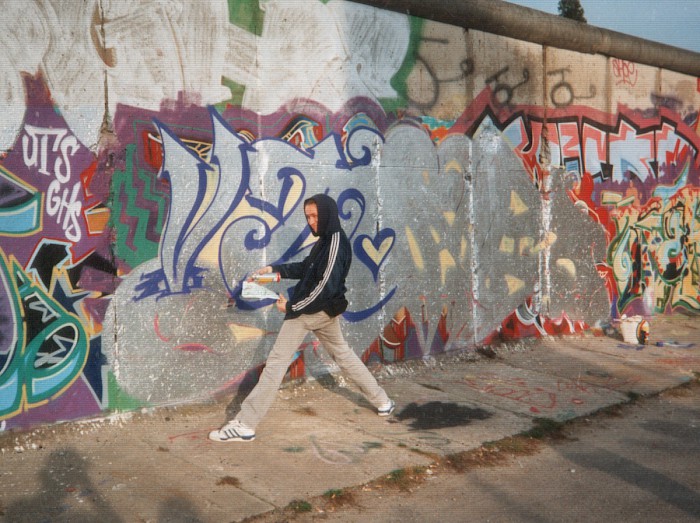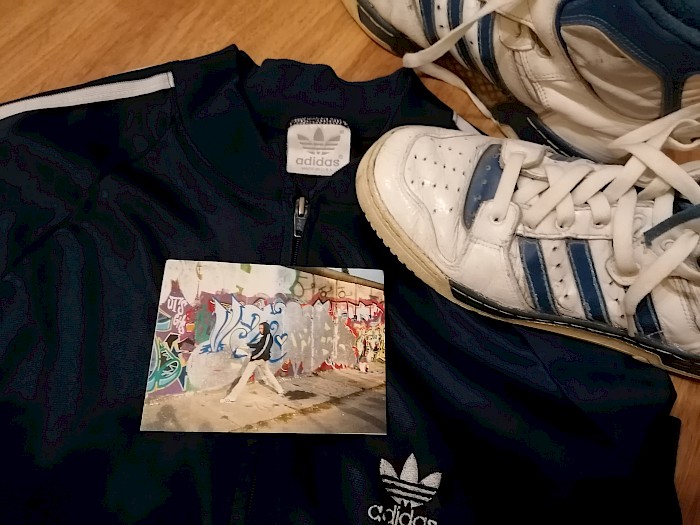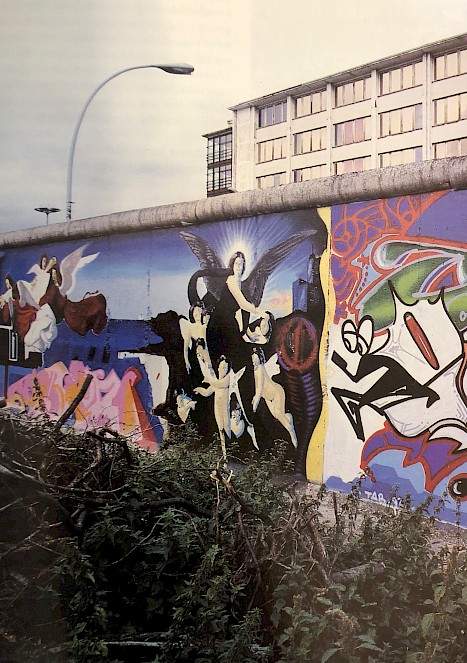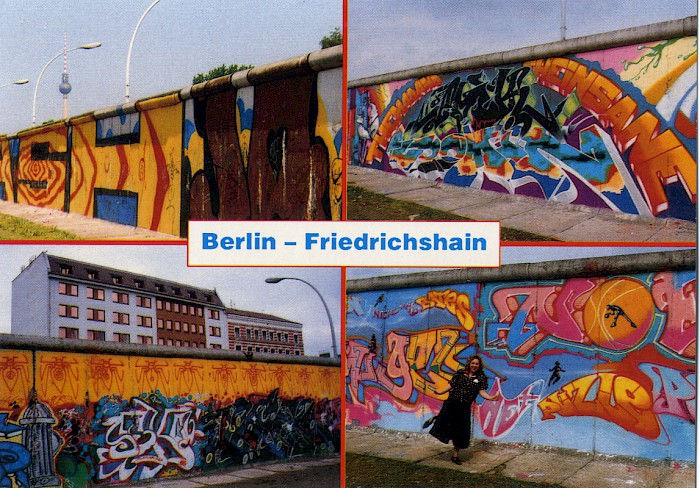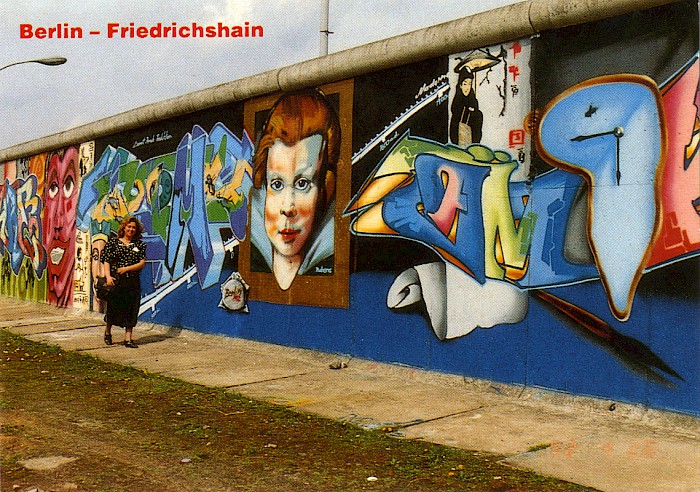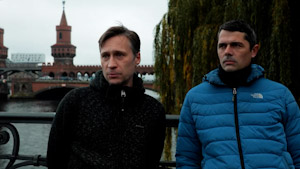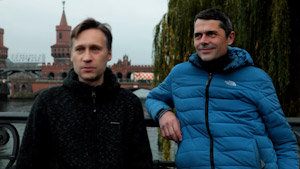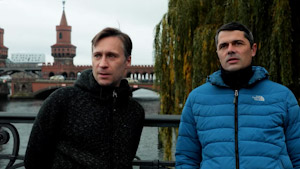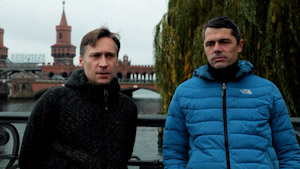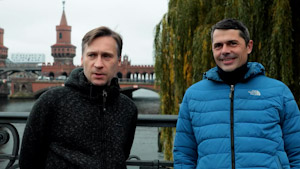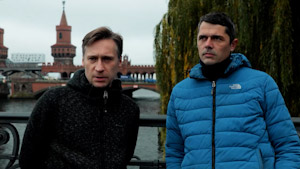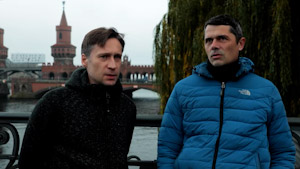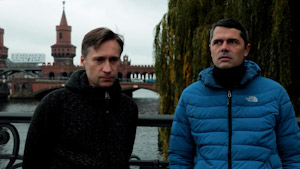Daniel Kensbock spray painting his work on the West Side Gallery in 1992. He still has the shoes and jacket he was wearing that day, 2021
"The Wall was such a scary thing; then it became our canvas. […] When the Wall fell, it was so satisfying to be able to scribble on it."
In the GDR, painting or merely touching the Berlin Wall was forbidden. There were no spray cans. kids painted and scribbled on tables, benches and chairs at school and in inconspicuous places, but not in public space. In West Berlin, graffiti was also forbidden, but people did it. The Berlin Wall in West Berlin was covered in large murals and political slogans. After the Wall fell, the graffiti scene experienced a boom. In the reunited city, people began spraying graffiti on every open surface available. The relics of the Berlin Wall had a special appeal since they were now accessible from the East Berlin side as well. Graffiti artists and sprayers from all over the world left their mark on the Berlin Wall, which had long become a symbol of freedom and the peaceful end to the SED dictatorship. The back of the East Side Gallery on Mühlenstraße, which was painted white, was also covered in graffiti. And just like that, without permission, art was created. Although the graffiti on the back of the Wall was almost as famous as the East Side Gallery murals, it was not preserved. However, the artworks from both sides were preserved on postcards which were sent from Berlin-Friedrichshain in the 1990s.
In the 1990s, graffiti on the back of the East Side Gallery was a Berlin tourist attraction; like the murals on the East Side Gallery, they were also printed on postcards.
Contemporary witnesses remember
Additional information:
The Graffiti Lobby Berlin curates graffiti on the “North Side Gallery” in Berlin-Mitte: https://www.graffiti-lobby-berlin.de/41.html
Podcast with the first generation of sprayers after 1989: https://ilovegraffiti.de/blog/2020/11/24/podcast-038-graffiti-in-berlin-vor-und-nach-dem-mauerfall-skume-bas2-von-den-ghettostars/
Book recommendation: Peter Stelzig (ed.): Decades vol. 1, 1990-2000, Graffiti Writing in Berlin, Berlin 2021
